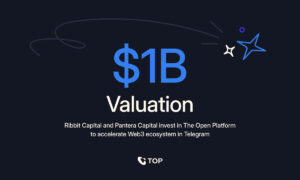The backbone of any blockchain lies in its consensus mechanism—a system that ensures agreement on the state of the network and validates transactions securely and efficiently. Solana and Lightchain AI, two innovative platforms, have introduced unique consensus models that cater to distinct needs within the blockchain ecosystem.
Solana’s Proof-of-History (PoH) has gained recognition for its exceptional speed and efficiency, making it a favorite among developers and investors alike.
On the other hand, Lightchain AI’s Proof of Intelligence (PoI) represents a groundbreaking approach by merging artificial intelligence (AI) with blockchain technology, pushing the boundaries of what consensus mechanisms can achieve. In this article, we compare these two pioneering systems to understand their strengths, technical foundations, and impact on the blockchain landscape.
Understanding Solana’s Proof-of-History (PoH): A Breakthrough in Speed
Solana’s Proof-of-History (PoH) stands out as an innovative addition to traditional Proof-of-Stake (PoS) systems. PoH operates by timestamping transactions in a linear, verifiable order before they are validated by the network.
This eliminates the need for nodes to communicate constantly, significantly reducing latency and boosting transaction throughput. With speeds of up to 65,000 transactions per second (TPS) and minimal fees, PoH is ideal for applications like decentralized finance (DeFi) and non-fungible tokens (NFTs), where scalability is critical.
However, PoH has its limitations. While the mechanism excels in speed, it requires substantial hardware resources, which raises concerns about decentralization and accessibility. Additionally, the reliance on a fixed sequence of operations could make the system vulnerable to targeted attacks if specific nodes are compromised. Despite these challenges, Solana’s PoH remains a benchmark for blockchain performance in high-throughput environments.
Lightchain AI’s Proof of Intelligence (PoI)
In stark contrast to PoH, Lightchain AI introduces Proof of Intelligence (PoI), a revolutionary consensus mechanism that integrates AI computations directly into blockchain validation. PoI incentivizes network participants to perform meaningful AI tasks—such as model training or data analysis—as part of the consensus process. This approach not only secures the network but also creates real-world value by utilizing computational power for AI-driven innovations.
PoI’s architecture emphasizes sustainability and efficiency. By leveraging AI models and reducing redundant computations, Lightchain AI minimizes energy consumption while delivering exceptional scalability. Furthermore, its decentralized governance ensures that all participants have a say in network upgrades and decision-making, fostering inclusivity and transparency. With its unique blend of blockchain and AI, PoI positions Lightchain AI as a trailblazer in the crypto space.
How PoH and PoI Differ at Their Core
The technical architectures of PoH and PoI highlight their distinct priorities. PoH relies on a cryptographic clock to maintain a consistent transaction order, which is crucial for its high-speed performance.
In contrast, PoI employs decentralized AI agents to validate transactions, embedding intelligence into the consensus process. While PoH focuses on throughput, PoI prioritizes utility by enabling applications beyond traditional blockchain use cases, such as predictive analytics and machine learning.
Which Mechanism Handles Growth Better?
Efficiency and scalability are critical benchmarks for any consensus mechanism. PoH’s streamlined validation process enables it to handle large transaction volumes with ease, making it one of the most scalable blockchain systems available. However, its hardware-intensive requirements can hinder widespread adoption.
PoI, on the other hand, achieves scalability through intelligent resource allocation. By directing computational power toward meaningful AI tasks, Lightchain AI ensures efficient network operations without compromising decentralization. This balance of scalability and accessibility positions PoI as a sustainable solution for long-term growth.
Evaluating the Resilience of PoH and PoI
Security is a core principle of blockchain technology, and both Proof of History (PoH) and Proof of Intelligence (PoI) offer unique methods to ensure a secure network. PoH uses a cryptographic clock to create a verifiable sequence of events, making it highly efficient for high-throughput tasks. However, its reliance on a centralized timestamping process creates a potential single point of failure, as compromising the cryptographic clock could threaten the network.
PoI, in contrast, uses a decentralized system of AI agents to distribute validation tasks. This reduces the risk of systemic vulnerabilities by ensuring no single entity can compromise the system. PoI also employs adaptive algorithms that evolve to detect and prevent malicious activities, such as fraud or network manipulation, in real-time. By addressing threats as they arise, PoI enhances security and builds a resilient, adaptable system suited to emerging challenges. These features make PoI a compelling alternative for secure blockchain solutions.
PoH vs. PoI in Action
- Solana’s PoH Strength: Solana’s Proof of History (PoH) excels in high-throughput applications like DeFi, gaming, and NFTs, where transaction speed is critical.
- Hardware Limitations: Despite its advantages, Solana’s high hardware requirements may restrict its adoption in resource-constrained environments.
- Lightchain AI’s PoI Advantage: Lightchain AI’s Proof of Intelligence (PoI) expands blockchain capabilities by integrating artificial intelligence, offering more innovative functionality.
- Versatile Use Cases: Unlike Solana, Lightchain AI caters to a broader range of applications, including supply chain optimization and healthcare diagnostics.
- Business and Developer Potential: PoI makes Lightchain AI a highly versatile tool for both businesses and developers, extending use cases beyond traditional cryptocurrency functionalities.
Why Lightchain AI’s PoI Could Redefine Blockchain Consensus Models
The fusion of AI and blockchain in Proof of Intelligence (PoI) marks a groundbreaking shift in how consensus mechanisms are designed.
By converting computational power into tangible value, Lightchain AI creates a seamless link between cutting-edge technology and real-world applications. This innovative approach isn’t just about advancing blockchain; it’s about setting a new benchmark for sustainability, inclusivity, and innovation in the field. Lightchain AI’s PoI challenges traditional models, such as Proof of History (PoH), to evolve and stay relevant in a rapidly changing technological landscape.
As industries increasingly demand smarter and more scalable solutions, PoI stands out as a forward-thinking framework that prioritizes efficiency and sustainability without compromising performance. It paves the way for a more inclusive blockchain ecosystem, ensuring that innovation serves the broader needs of people and businesses alike. With PoI leading the charge, the future of blockchain consensus is not only more intelligent but also more adaptable, unlocking new possibilities for technology-driven transformation.
The Future of Consensus Mechanisms with Lightchain AI Leading the Way
The comparison between Solana’s PoH and Lightchain AI’s PoI underscores the evolving nature of blockchain consensus mechanisms. While PoH excels in speed and scalability, PoI introduces a new dimension by embedding AI into the core of blockchain operations.
This innovation not only enhances functionality but also addresses pressing challenges like sustainability and decentralization. As blockchain technology continues to mature, Lightchain AI and its Proof of Intelligence mechanism stand out as a transformative force, paving the way for a smarter, more inclusive digital future.
With PoI leading the charge, we can look forward to a world where blockchain and AI work together seamlessly, pushing the boundaries of innovation and unlocking new possibilities for businesses and society at large. So, it’s clear that with Lightchain AI’s pioneering approach, the future of consensus mechanisms is set to be more intelligent, efficient, and impactful
👉 Visit the Lightchain AI Website
👉 Read the Lightchain AI Whitepaper
👉 Follow Lightchain AI on Twitter/X
👉 Join the Lightchain AI Community on Telegram



































